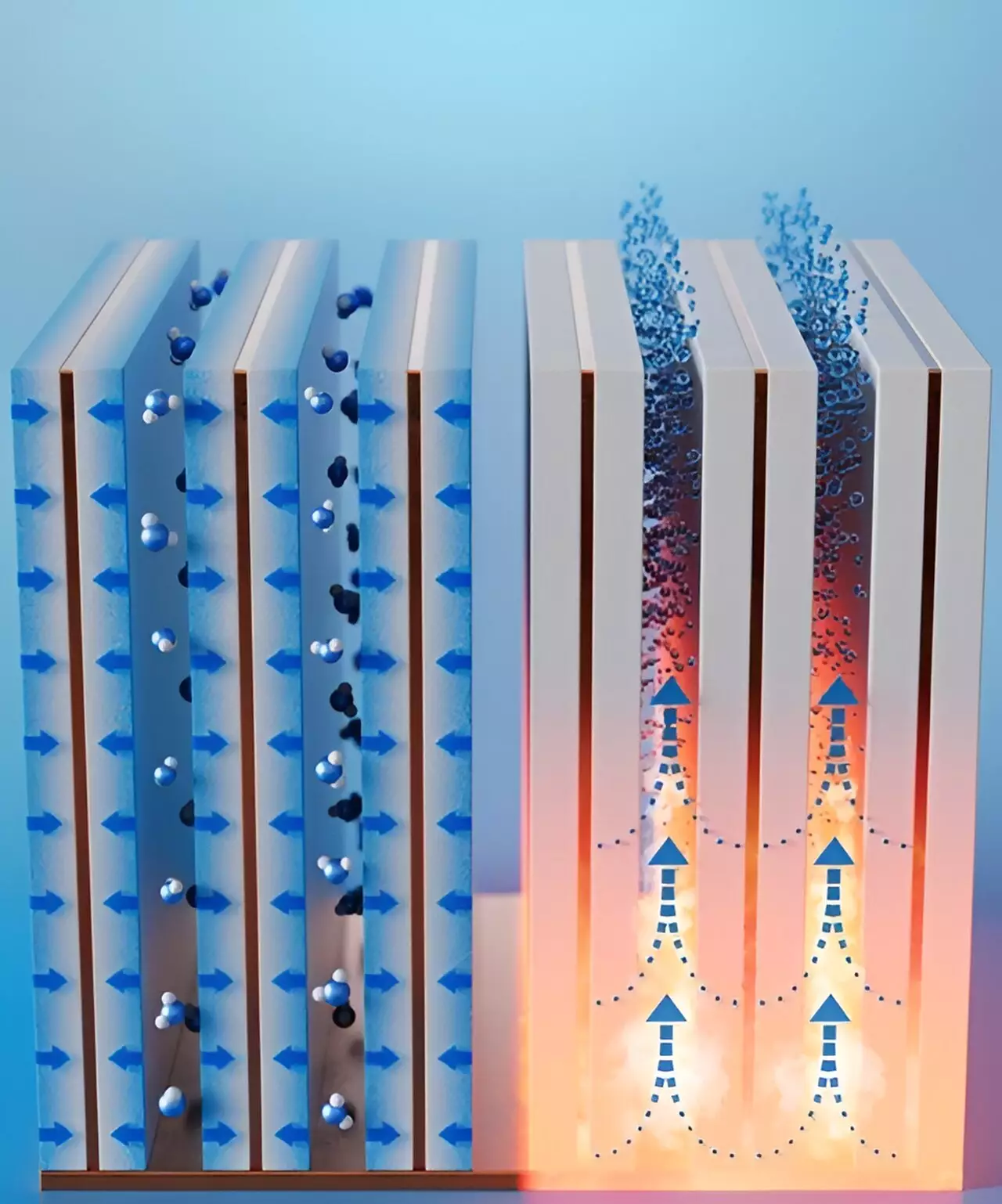Access to clean and safe water is a critical issue that affects people around the world. With limited water resources available, especially in arid regions, researchers have been working on innovative solutions to harvest water from the air. The development of a compact device with absorbent-coated fins to trap moisture and generate potable water when heated has the potential to address the growing demands for water, particularly in areas with low humidity levels.
Earth’s atmosphere contains a significant amount of fresh water in the form of vapor. However, collecting this colorless and transparent gas has always been a challenging task. In the past, researchers have focused on trapping dew or fog to gather water, but these methods are not effective in dry regions with limited moisture. This led to the exploration of special materials such as temperature-responsive hydrogels, metal-organic frameworks, and zeolites to extract moisture from the air and release it through heating.
A team of researchers led by Xiangyu Li, Bachir El Fil, and colleagues, designed a humidity harvester that can efficiently capture water from the air. The device features water-adsorbent “fins” made of a copper sheet sandwiched between copper foams coated with a zeolite. Unlike previous studies that focused solely on material development, this new approach involved the co-design of the adsorption bed with material properties to create thin, compact, and efficient adsorbent fins for water harvesting.
To demonstrate the functionality of the humidity harvester, the researchers built a device with 10 small adsorbent fins placed closely together on a copper base plate. This setup allowed for maximum moisture capture from air with low humidity levels, such as desert-like conditions with 10% relative humidity. After saturating the fins, the trapped moisture was released when the base plate reached a temperature of 363 degrees Fahrenheit. Through multiple collection-release cycles, the team calculated that 1 liter of absorbent coating could produce up to 1.3 liters of potable water per day in air with 30% relative humidity.
The development of this innovative water harvesting device has significant implications for providing clean water in arid regions. By efficiently capturing moisture from the air multiple times a day, this system has the potential to be integrated into existing infrastructures that generate waste heat, such as buildings or transportation vehicles. This cost-effective solution offers a promising approach to addressing water scarcity issues and meeting the growing water demands in areas with limited water resources.
The advancements in water harvesting technology demonstrate the potential to generate clean and safe water from the air, particularly in arid regions. The development of compact and efficient devices like the humidity harvester opens up new opportunities for sustainable water solutions and could play a crucial role in providing access to potable water for communities around the world.


Leave a Reply
You must be logged in to post a comment.